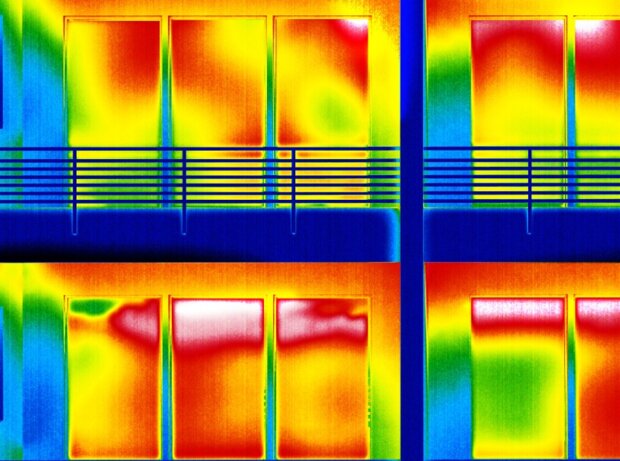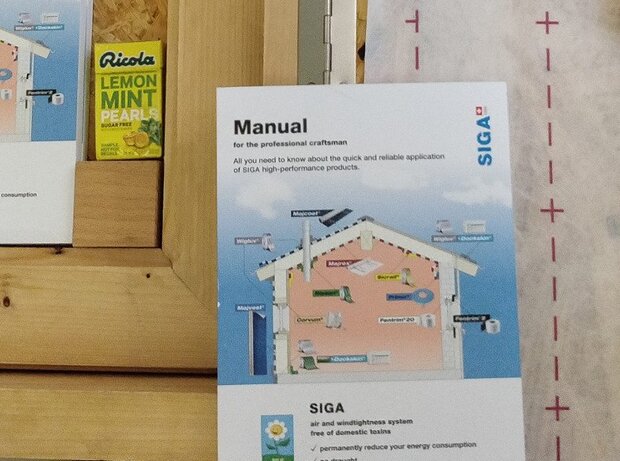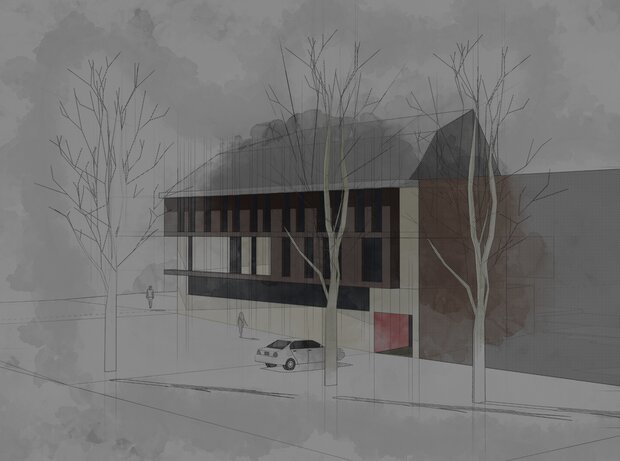
New Tool Helps Prevent Overheating in Developments
The Good Homes Alliance has released a practical one-page tool that enables designers and local authorities to reduce the risk of overheating in developments from the very beginning.

I talked to the tool’s creators, Susie Diamond and Julie Godefroy, to find out why they built it and how it works.

Susie Diamond & Julie Godefroy, the two creators of the tool
Our bodies are very sensitive to temperature – and for good reason. Being too cold or too warm can damage our health. In the worst cases, it may kill us.
In the UK and Ireland overheating does not harm as many people as cold does. But overheating is still very unpleasant, and for some people, dangerous. Last summer (2019) the heat in England was estimated to have caused around 1,000 extra deaths.
Covid spelt double trouble
In 2020 the Covid 19 epidemic has made things even more difficult. Apartment dwellers working from home complained on Twitter of the ‘living hell’ of ‘absolutely boiling’ flats.
And for some vulnerable people Covid brought a double whammy. People with heart problems or who are very elderly – people for whom overheating is particularly dangerous – are exactly the people also most vulnerable to Covid. In other summers, they might have escaped to cooler places like a park or air-conditioned shopping centre. But because that would mean mixing with other people, they have had to stay in and have been trapped indoors. (These ‘intersecting risks’ also make lockdowns very difficult for people in fuel poverty in winter.)
Bad design to blame
Even when our health is not in danger, being too hot is miserable, uncomfortable and distracting. Sleep – one of the fundamentals of good health – is particularly likely to be affected.
Unfortunately, bad design or construction is too often the reason for uncomfortable summer temperatures indoors.
Modern apartment developments are especially prone to overheat. This is an issue throughout Europe – even in ‘cold’ countries like Poland. London apartment developments are also notorious for overheating. Low-rise housing can also overheat, however.
Overheating risk is spotted too late
The sad thing is, many overheating problems could have been spotted – and put right – right at the start of the development process.
But once planning permission has been granted, it can be too late. Serious risk factors such as too much glazing, or poor building layout, are hard to change after this point.
Friends and fellow building engineers Julie Godefroy (sustainability consultant and CIBSE Technical Manager) and Susie Diamond (specialist in dynamic thermal modelling at Inkling LLP) are both experts in the building physics surrounding overheating. And they were getting fed up with seeing the same mistakes being made again and again.
Causes are misunderstood
The problem is made worse by widespread misunderstanding of the main causes of overheating.
“I get frustrated when I hear people say that overheating happens because buildings are ‘too insulated’ or ‘too airtight’.” “In fact, the worst overheating risk is usually brought about by excessive glazing or noisy surroundings.”
While detailed thermal modelling systems such as IES or PHPP can highlight and quantify overheating risk, it isn’t carried out on every development. And even when it is, the analysis may not be done early enough, when the important decisions are being made.
To make matters worse, overheating often sits between disciplines. Acoustics, building services and fabric design are all involved, Julie Godefroy explains, with no one discipline having overall responsibility.
Early warning is needed
Susie Diamond is of the main authors of CIBSE’s detailed guidance on overheating, TM59, published in 2017. “When we were developing TM59, we talked about the need for a triage system, to identify which projects were most in need of full modelling. If you can identify something is at high overheating risk, then that justifies the cost of full analysis.”
But there was no ‘early warning’ system to flag up issues early enough to correct fundamental problems in a design.
When the Good Homes Alliance decided they wanted to produce exactly that – an early warning tool for overheating risk – Susie Diamond and Julie Godefroy jumped at the chance. “We got together and put in a proposal.” And they won the contract.
How the tool works
To make sure it was a useful as possible, the pair consulted lots of potential users to ask what would work. “People were very clear; they did not want a spreadsheet. They wanted something very simple – a check-list – with some guidance available too.
You can download the finished product (it’s free) here: ‘Overheating in new homes: tool and guidance’.
“What we have now is a one-page checklist, with simple scoring that generates an overall risk rating of low, medium or high. Some more detailed guidance comes with it too,” Julie Godefroy explains.
“The one-page tool you can literally print out and take to a planning pre-meeting, and use it on the spot to quickly check the risk, and decide the next steps there and then.
The next steps do depend on who is using the tool and the nature of the project. However, roughly speaking they are as follows:
- Low risk means no immediate action is needed. It is important to ensure nothing happens to increase risk or reduce mitigation, either in the planning conditions, or beyond.
- Medium risk means some design changes are likely to be needed to reduce risk and/or increase mitigation. Detailed modelling should be done to check the performance.
- High risk means the design needs to change to reduce risk (eg by altering layouts) and increase mitigation (eg by adding shading). Detailed modelling should be done to check the performance.
Who is the tool and guidance for?
The fact that overheating happens, and happens often, tells us that designers, engineers and contractors don’t always get this right. Using this guidance should flag potential problems before projects leave the drawing board.
“We hope that by regularly doing a quick early overheating check on all designs, designers will gain an instinct for what would be risky, and what less so,”
Some firms already recommend their architects use this tool early in each design, for example.
Equally importantly, the tool was designed so it can be used by non-specialists. In particular, it is aimed at people in local authorities who are considering planning applications for new developments.
“We want to enable local authorities to be able to assess plans when deciding whether to grant permission, and if so, whether planning conditions should be attached,” Julie Godefroy explains.
“It is local authorities who have to deal with the problems of overheating homes. Local authority environmental health officers are the first port of call for residents in unfit housing. So, local authorities have a clear reason to want to stop any problems before they start.”
What does the guidance tell us?
Excess glazing causes discomfort summer and winter
Excessive areas of glazing are a particular bugbear for the pair. Modelling and real-life research alike have shown again and again that too much glazing is one of the commonest risk factors for overheating. Yet huge windows stubbornly pop up in new housing – again and again.
The guidance that comes with the Good Homes Alliance tool explains that glazing down to the floor, or in corners, doesn’t contribute usefully to daylight levels. But it does lead to summer overheating, “and of course huge areas of glass create discomfort in the winter too,” says Susie Diamond. “What is the point of it?”
Shading is a valuable defence against overheating. But in highly glazed dwellings, shading can’t completely eliminate the risk. “This is what we find in practice, so this is reflected in the tool,” Susie Diamond explains.
Ventilation potential is crucial
The two most important ways of keeping cool in summer are firstly – stop the heat getting in, and secondly – getting unwanted heat out. Both are crucial!
Sadly, the UK building regulations do little to help – they still barely address overheating at all. “The provisions for purge ventilation in Part F are an absolute minimum,” Julie Godefroy says. “Even then, they are not always met, so there is a prompt in the tool to check the design is compliant – but no points!”
“It’s reasonable to ask for a higher purge rate than the 4 air changes per hour set in Part F. And the tool does give mitigation points if there is more than the legal minimum.”
Too often in practice though, window restrictors, and top-opening windows in deep reveals, mean the actual opening area is way too small, and smaller than was assumed on paper. The tool gives more guidance on this, she adds.
Noise, pollution and security affect ventilation
Julie Godefroy points out a common mistake when considering ventilation potential: “Modellers often assume that windows will be open when it is hot. But if the dwelling is in a noisy, polluted or unsafe-feeling location, people won’t leave their windows open. The tool gives a high risk score for these factors, as they can lead to major overheating risk if ignored.”
Similarly, single-aspect apartments have a known high risk of overheating, as previous Good Homes Alliance research identified. “Dwellings should be dual aspect if at all possible” the pair insist. “It is helpful for so many reasons. In a single aspect flat there is no opportunity for cross-ventilation, and to make matters worse, all the rooms will be suffering from solar gains at the same time, which means there is nowhere in the flat you can go to get away from it. It can be extremely uncomfortable,” Julie Godefroy says.
Thermal mass isn’t a magic bullet
Too often, people believe thermal mass is a kind of “magic bullet” that overcomes overheating risk all on its own. But that’s not the case, as Julie Godefroy explains. “It is only helpful if there is generous ventilation at night, enough to remove all the heat absorbed during the day. Without adequate night ventilation, thermal mass is not your friend!”
Tool is already popular
Julie Godefroy presented the tool in a webinar in July 2020, and she was delighted by the attendance. “I was really encouraged that so many local authority staff came, and they were clearly using the tool. That’s exactly what we hoped.”
The tool is being formally trialled as part of a social housing programme in Wales. The authors are now keen to receive feedback from all users, in order to keep improving it (see their questionnaire here). The tool is also gaining formal status in London – the UK’s highest–risk location for overheating. In its draft London Plan Guidance, the Greater London Authority will require the overheating risk score to be calculated, and included in all development applications.
The best thing about this free tool is that everyone can use it – clients, designers, engineers, contractors, planners, environmental health officers, climate strategists – even would-be purchasers and tenants. Given how tough some people found 2020’s heatwaves – and given that we know we’ll be getting more in future – wouldn’t you want to check?
How can construction keep in the cool?
You shaded out the mid-day sun, and purged out the heat overnight. Now, how do you keep hold of that precious cool when the sun climbs high again tomorrow?
- Firstly, when it’s very hot outside, heat recovery ventilation can be switched to cool recovery ventilation. Many MVHR systems have this as an automatic setting.
- Secondly, insulation, especially outside the structure, will slow down the transfer of heat through the walls and roof.
- Thirdly, wind-tightness and air-tightness will stop hot air sneaking in through gaps in the fabric, to heat up the structure and heat up the occupants.
So – built tight and ventilate right is always important, winter and summer!

Kate de Selincourt
Kate is a writer and researcher specialising in sustainable and healthy building and retrofit.










